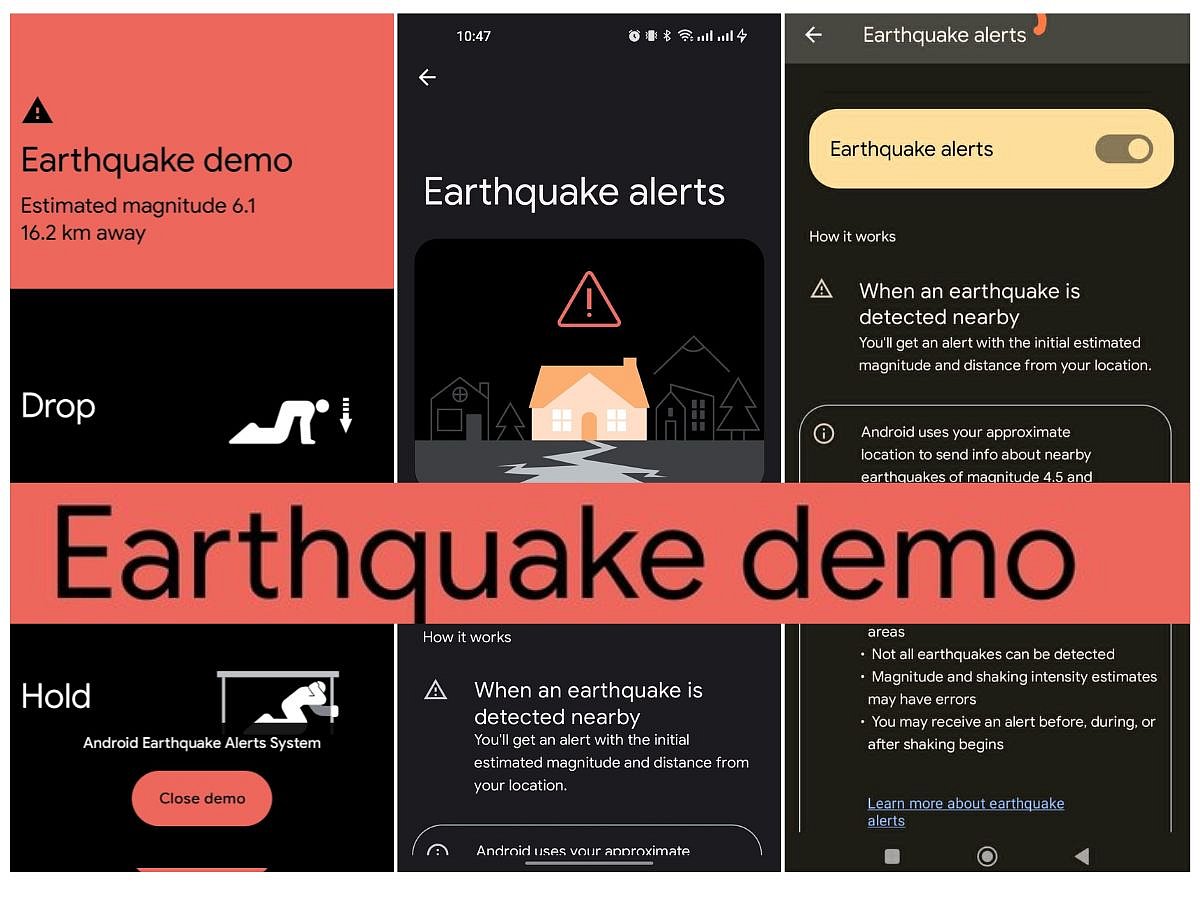Earthquake alerts with Android: What to know about world's largest smartphone-powered warning system
Enhancements driven by end-user data to boost accuracy, speed

Earthquakes might actually be detectable using a network of smartphones now.
You heard that right: There's this thing called "Android Earthquake Alerts" that's basically turning our phones into a giant, global earthquake detector.
By pooling data from smartphones worldwide, Android not only sniffs out tremors but also shoots out early warnings.
Accelerometers: Two alerts
The Android Earthquake Alerts (AEA) system leverages the accelerometers in Android smartphones.
This helps detect seismic activity, transforming each device into a tiny seismometer.
The system issues two types of alerts:
"BeAware" for light shaking and
"TakeAction" for stronger shaking.
This overrides the phone's screen and plays a loud sound to ensure user attention.
Here's one use case: Back in 2023, during that massive 7.8 magnitude quake in Turkey and Syria, these alerts gave people a few precious seconds of warning.
That might not sound like much. But in a place where the usual seismic networks aren't as strong, those seconds could have been life-savers.
How it works
Users must have Wi-Fi or cellular data connectivity and both Android Earthquake Alerts and location settings enabled to receive alerts (you can disable them in settings).
In a nutshell, each Android phone’s built-in accelerometer detects the initial P-wave of an earthquake — the less destructive precursor wave — and sends a signal with an approximate location to a central server.
A rapid analysis of seismic data from multiple phones to confirm an earthquake and estimate its location and magnitude.
In response, the system issues an alert to users in the affected area.
It's all about those early warning systems (EWDS) making a real difference.
18,000 earthquakes detected so far
The system has detected over 18,000 earthquakes since its rollout in April 2021, starting in New Zealand and Greece, and now active in 98 countries, significantly expanding access to earthquake early warnings from 250 million to 2.5 billion people, as per Science.
A major challenge is real-time magnitude estimation, which the system has improved over three years, reducing the median absolute error from 0.50 to 0.25, matching or exceeding traditional seismic networks in accuracy.
User feedback, collected via a survey, shows 85% of respondents find the alerts "very helpful," with 79% valuing warnings even without feeling the earthquake, indicating strong public trust and utility.
Global reach
Due to its larger market share and the ability to implement such features across diverse regions without requiring additional infrastructure, Android's system has a much broader reach (vs iOS's more localised earthquake warning implementations).
It's not perfect: Continuous improvement through data collection and user feedback ensures the system adapts and enhances its effectiveness over time, a dynamic not as extensively documented for iOS's offerings.
Fact File:
Developer: Developed by Google in collaboration with University of California, Berkeley seismologists including Richard Allen, Ph.D., and Qingkai Kong, Ph.D.
Enablers: Uses accelerometers in Android smartphones to detect seismic activity
Launch: April 2021, starting in New Zealand and Greece
Coverage: Currently active in 98 countries, covering 2.5 billion people
Earthquakes detected: Over 18,000 earthquakes detected by the system to date
Alerts types: "BeAware" for light shaking; "TakeAction" for strong shaking with loud override sound
Requirement: Requires Android Earthquake Alerts enabled, location services, and internet connectivity
Iterations: Continuous improvement reduces earthquake magnitude estimation errors from 0.50 to 0.25
User survey: 85% find alerts very helpful; 79% value warnings even without feeling shaking
Coverage: More extensive global coverage than iOS earthquake alerts, which require additional infrastructure
Case study: Provided crucial seconds of warning during 2023 Turkey-Syria magnitude 7.8 earthquake, a region with limited seismic networks
Challenges
Unlike traditional seismic warning systems that depend on costly arrays of physical sensors, Android’s approach leverages existing smartphones, enabling earthquake early warning accessibility for billions worldwide including regions with sparse infrastructure.
The scaling up of this citizen science network represents a revolutionary democratisation of disaster preparedness.
Major technical challenges include reducing lag and accurately estimating quake magnitude in real time. Over three years, the system has halved its estimation error, rivalling professional seismic networks.
User reception is overwhelmingly positive, with many appreciating the seconds of advance warning that can allow them to duck, drop, and cover.
The successful alerts during the devastating Turkey-Syria quake underscored the life-saving potential of such innovations.
Outlook
In any software development, iterations are the norm.
Continued enhancements driven by data and user feedback could improve accuracy and notification speed, increasing global resilience to earthquakes through ubiquitous smartphones.
Android Earthquake Alerts shows how emerging tech harnessed at a global scale can redefine public safety.
Android phones have become a mini earthquake detective. So, next time the ground rumbles, your phone might just be your best friend.
Sign up for the Daily Briefing
Get the latest news and updates straight to your inbox
Network Links
GN StoreDownload our app
© Al Nisr Publishing LLC 2025. All rights reserved.